#musee marie laurencin
Text

Marie Laurencin painted this, titled "Portrait de femme à la colombe", in 1932, and it reminded me of many pigeon-lovers of my acquaintance. Also, she painted one called Les Biches which is both a fantastic painting and a great title.
I'm always on the lookout for female artists I like, because female artists are so rarely featured or given exposure, and also every time I see a post about Stuart Semple and Anish Kapoor I make a point to post a female artist's work instead of reblogging it.
[ID: A painting of a woman in a fantastic multi-layered hat and matching outfit, from the shoulders up; her face is extremely pale, with a small curving red mouth and dark eyes, and a mass of light brown hair under the hat. She is looking down at a corner of the painting, where a white dove perches, looking up at her. The echo of the dove's coloration and dark eyes in the face of the woman is pronounced.]
120 notes
·
View notes
Text
Marie Laurencin (1883-1956)
French painter, illustrator, and stage designer, born in Paris. Apart from evening classes in drawing, she was self-taught as an artist. In 1907 she was introduced by the picture dealer Clovis Sagot to *Apollinaire, *Picasso and their circle (she painted a group portrait of several of her famous friends in 1908: The Guests, Baltimore Museum of Art). For several years she lived with Apollinaire, and she exhibited with the Cubists. Her work, however, was entirely peripheral to the Cubist movement. She specialized in portraits of oval-faced, almond-eyed young girls painted in pastel colours, and although she borrowed a few tricks of stylization from her Cubist friends, her style remained essentially unaffected by them.
Text source: A Dictionary of Modern and Contemporary Art (Oxford University Press)

L'Eventail (The Fan) c. 1919 • Tate Modern

Danseuses espagnoles (Spanish Dancers) • 1920-21 • Musée de l'Orangerie, Paris

Apollinaire and his Friends/Group of Artists • 1909 • Baltimore Museum of Art - Baltimore, Maryland
(painted in expressionist style)
(from left to right: Pablo Picasso, Marie Laurencin, Guillaume Apollinaire (French poet) and Picasso’s muse Fernande Olivier).
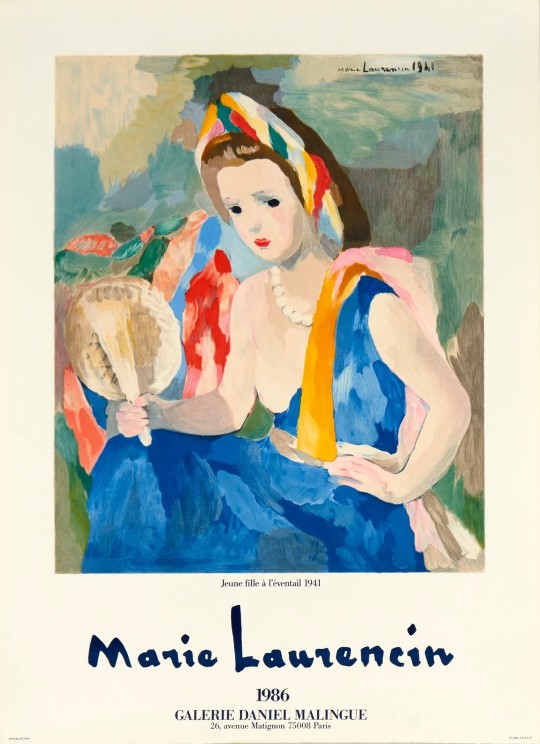

Trois jeunes filhes (Three Young Women) • 1953 • Marie Laurencin Museum - Nagano-Ken, Japan.
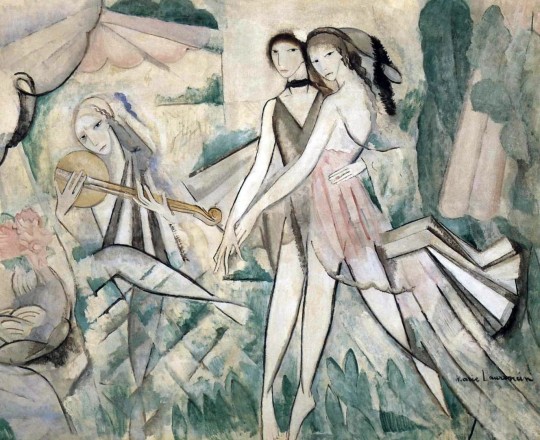
The Elegant Ball / the Country Dance • 1910 • Moderna Museet, Stockholm
#Section d'Or cubism#art#painting#fine art#art history#french artist#marie laurencin#women with fans#women in paintings#woman artist#painter#paris avant-garde#musee de l'orangerie#cubism#baltimore museum of art#moderna museet#museum marie laurencin#tate modern
11 notes
·
View notes
Text
Articles no. 12
Marina Abramovic Thinks the Pain of Love Is Hell on Earth by David Marchese The New York Times October 2023
Marie Laurencin by Johanna Fateman 4Columns November 2023
The Exhibition Making a Case for Art Without Men by Maggie Lange The New York Times October 2023
The grim truth about growing up in the public eye by Mischa Barton Harper's Bazaar June 2021
Narciso Rodriguez on Quiet Luxury and His Mystery Muse by Kathleen Hou Elle November 2023
The True Story Behind John F. Kennedy Jr.'s George Magazine by Kate Storey Esquire April 2019
Israel Is Losing This War by Tony Karon and Daniel Levy The Nation December 2023
In Memory of Dr. Refaat Alareer by Editorial The Electronic Intifada December 2023
Before 'quiet luxury', there was prep by Amy Odell The Back Row April 2023
The age-old allure of quiet luxury by Emma Childs Marie Claire December 2023
Columbia Suspended Pro-Palestine Student Groups. The Faculty Revolted by Andrew Marantz The New Yorker December 2023
1 note
·
View note
Text
First Entry!
Welcome to my Academic Blog! I will share my insights regarding aesthetics and how it is connected to the Ways of Seeing, Episode 1 by John Berger.
Firstly, I want to discuss the discovery and evolution of my aesthetics. My first introduction to aesthetics began during my childhood with my family as the main influence. My mom loved to collect different paintings from local artists and have them displayed in different areas of our home. As a child, I did not think much of it as I was simply used to seeing it. Another member of my family who would also influence me would be my older cousin. She loved creating various art forms such as drawings, watercolor paintings, and fashion sketches. I admit that I was a little demotivated to fully commit to art as I did not have a natural ability to draw like her, but I still did it for fun.
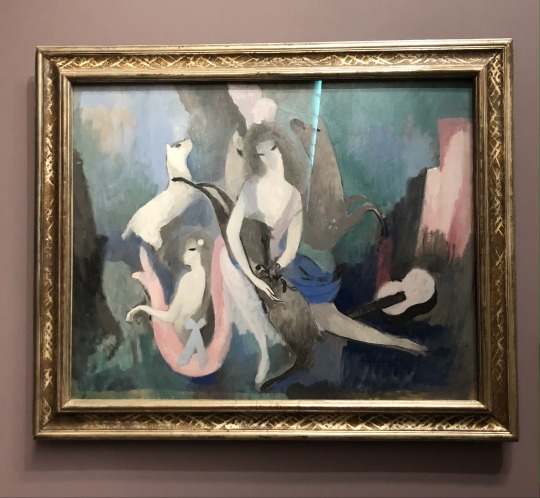


Images I took of Paintings by Marie Laurencin. Musee de l’Orangerie June 4, 2018
A few years later, I found myself appreciating the work of Marie Laurencin in the Musee de l'Orangerie. I was casually viewing other paintings within the museum while silently wishing to leave for lunch as we took a morning tour. Suddenly, when I saw her pieces, I was impressed by how they contrasted with the style of paintings next to them. I stopped to note how she utilized soft and light-colored shapes to construct her paintings. It felt as if my appreciation for art reignited at this moment.
In the video Ways of Seeing, Episode 1 by John Berger, I learned about the relationship between what we are seeing and our response or perception. Context matters when we are viewing art and it affects the meaning of an image. One of the notable points he made was about the power of photography. Its convenience and usage in the modern world allow us to quickly share images without having to see the subject firsthand. Nonetheless, this power can be misused quickly as we can overlook the effort made to create the original image and simply see it in passing. Sometimes, an image cannot fully encapsulate the art and gives a different experience from viewing it in person. To some extent, I believe that his insights apply to anything that we are able to see, not limited to paintings.
With this, I would like to share the reason that I am pursuing photography. Taking pictures is something that I would normally do during travels or trips. However, I have decided to join an organization to photograph for the college to explore different subjects. From pictures taken during travels, I will shift my focus to capture moments or events rather than scenery. I am passionate about capturing moments and the people that surround me, and I would like a more original approach to photography.
1 note
·
View note
Photo
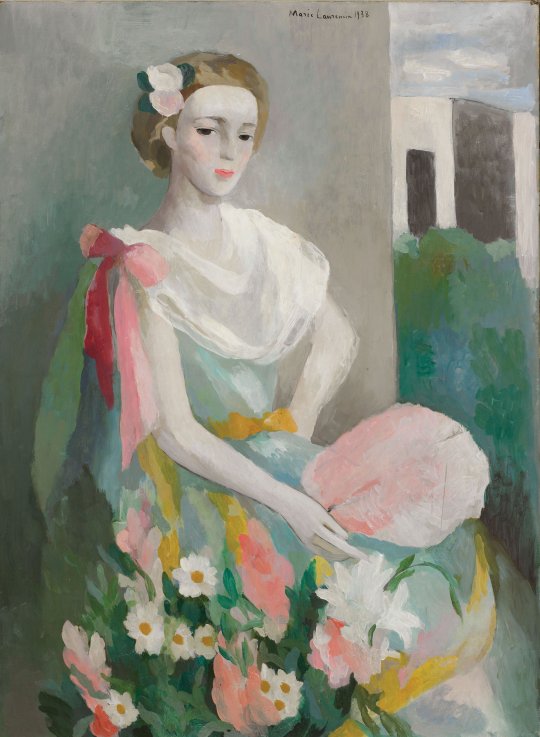
Marie Laurencin (1883 -1956, French) ~ Mme Charlie Delmas, 1938
40 notes
·
View notes
Photo

Femmes au chien (Women with a dog) Marie Laurencin 1923 oil on canvas 80x100 cms Musee-Orangerie, Paris
#Marie Laurencin#art#artist#painter#Femmes au chien (Women with a dog)#1923#oil on canvas#80x100 cms#Musee-Orangerie#Paris#painting
10 notes
·
View notes
Text
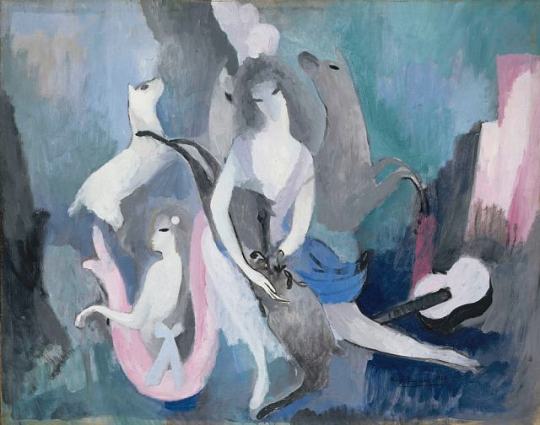
Marie Laurencin | Les Biches https://www.artlimited.net/agenda/marie-laurencin-les-biches-peinture-exposition-orangerie-musee-national-paris/fr/7583527
3 notes
·
View notes
Photo
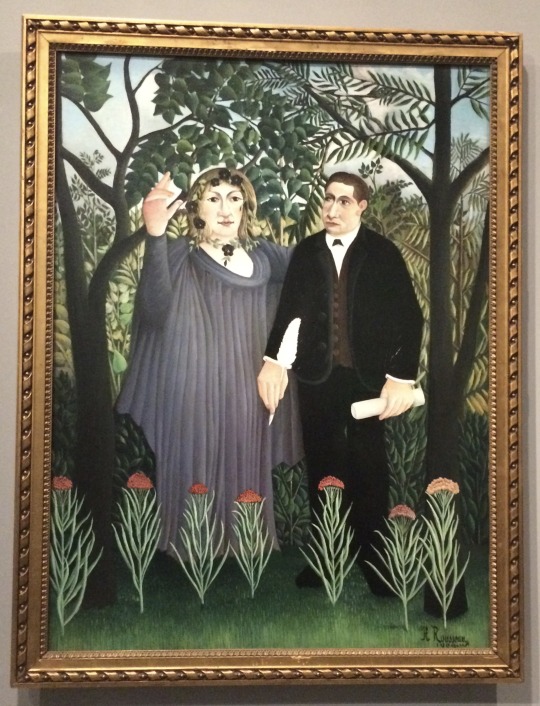
12:27 pm : L'exposition "La Clé d'une passion - Collection S. Chtchoukine" à la Fondation Louis Vuitton : La Muse inspirant le poète (Portraits de Guillaume Apollinaire et Marie Laurencin)" par Henri Rousseau, dit le douanier Rousseau - Paris, 1909 - Huile sur toile - Paris, octobre MMXVI.
(© Sous Ecstasy)
#art#art therapy#art daily#art show#art paris#art blog#art account#art of tumblr#art of the day#art community#art lover#art addict#art work#art exhibition#la clé d'une passion#sergueï chtchoukine#Chtchoukine#painting#peinture#Henri Rousseau#sous ecstasy#mes illusions sous ecstasy#fondation louis vuitton#fondationlouisvuitton
6 notes
·
View notes
Text
YOU NEVER KNOW
I thought he was looking at me
I turned around and he was looking at me.
Pay attention, you need to pay attention. Focus
I saw my old friend last night, she is like a reptile.. as much so as the last, last time. The big spaces in her lower set of teeth like slim doorways into her dark mouth
She asked me who was teaching the class, I told her, it was him
She said, oh! he courted me. Yeah, dinners and such-the like…his fancy apartment-she had spilled candlewax on his jacket
And She of course was in agony as per usual of her role (as she told me the story). She said
he got her, her show in Russia
but, after some time, and her show was slated.
She was in the clear. She listened to him lecture… they went out for a drink.
Over the table he reached, he had tried to wipe away some bicycle grease from her arm- maybe she needed help with her dirty arm, with the napkin
But alas, she pulled away
once the drink was empty
she unlocked her bike and headed out toward the rest of her life
he sent her a text.
It said,
“I feel you have gone COLD on me”
then he pulled and cut
the funding for her show in Russia.
WOW
I told her, ouch
I think there are two aspects to her story
She was truly embarrassed. She couldn’t help but reveal her agony. the painful memory of being helped because of her beauty and sex appeal
An inward pain, her perceived mediocrity
Because I know her, I know she has sorrow she hasn’t married and had children-she may have been expressing that too
And I said, “ I had a feeling he was into me”
And she said, I don’t know, no no he’s a good guy-he genuinely cares about ideas. I mean he’s just French
And I said, yeah I had the feeling-it disturbed me, I actually have been talking to my therapist about it.
REALLY? She said
I can’t believe you are talking to your therapist about it
Yah, I have. I said.
She said, well, he is French. I remember once we were watching him speak and there was a very attractive older woman on the stage next to him and he was looking her up and down, not even caring that others were there SEEING him. He did it repeatedly. Hahahaha she laughed.
But I mean he IS into women, conventionally-attractive women.
then she tilted her head up toward the ceiling and said
“I should have married him”
I knew what she meant. She meant, he definitely wasn’t into me because I’m ugly
That is always her jab. She’s a serpentine beauty, she KNOWS how much power she has. She’s most likely only my friend because I’m ugly.
Is that my own self hate? Or is it her self hate reverberating?
Am I ugly? If so, why can’t I be? As long as I don’t block anyone’s view
The view is nice from here though
I’m not in the way of her
She has always been this way to me-
The poor me. Ugly, not even able to gravy-ate the attention of a 70+ year old man
Even a Frenchman
Even with an ass like mine.
these plump juicy buns I sit upon
When I got back home,
I wrote him an email.
I said, I saw my dear old friend last night, she said you two are also friends.
Here is a painting I made (attached refracted MARIE LAURENCIN)
See you soon
J
I am always forcing my paintings on people. Like smashing them into people- wishing that someone is like
“you did it!” “THIS is GREAT”
So, I can fulfill the fantasy of being a great artist/\, like Duchamp.
I can just be kind of interested peripherally, in some of the women who came before me. Especially the one who will always be eternally embarrassed by her own mediocrity like Marie Laurencin, the muse, her paintings live on despite the humiliating criticism. Gertrude Stein’s ultimate rejection.
she can have access though. With Her little gaps, her reptilian charm. glossy/romantic eyes her twitches performed and perfected from years of assisting the fashion photographer,
where she watched the girl step- swing- smile- step- swing- smile- hop- step swing- smile- hop- swing
it’s very seductive you know, this performed happiness, desire. Pressing the finger into the lip like a shush, biting the tip of the finger, thinking then exclaiming a hot breath to thinking again..
If she chose, she could have gardened in his family’s country estate in Normandy.
And gotten close to him. Little by little things would drop out of his mouth, like little teeth or pieces of colored gum and then words, his tongue, his limp penis would unfurl from his pants like the stamen of an old flower, accordion-like a slinky toward whatever furniture is there under him. His jeans zipper agape
The custom
It’s been 10 years since we met. Men have always wanted to tell me they think I’m ugly-even while they press their dicks into me. Does it mean, “I am aware you are not good enough for me, but I like you anyway” or “don’t get me wrong, you ARE ugly, but I find you irresistible, it's not my choice”
I get on all fours and growl at my oldest dog, I bite his ears, I bite his cheek I dart my tongue out to his ear flicking it up
He’s excited now- he wraps his paw around my arm. His furry black paw-like I imagine a bear might. He growls and bites my face and then jumps back. we take turns, our spit slapping the others cheek like a drum-saliva and noises we are jumping around in the feather covers of bed, messing it up, playing- and then I get on all fours and he sidles up next to me and licks my ears breath heaving out of his nose pushes his body into mine he crooks his head over me. Saliva dripping from his nostrils. He’s mounting me now he can't control it-his desire to dominate me is embarrassing him but he can't help it. He squeezed me with his paws and his neck extends out, his eyes gloomy, kind of pleading in a way.
I think about him now
When I saw him looking at me-and it disrupted me-
I wanted his country fantasy in Normandy-but I knew it depended on me, and I failed the test.
He did like my ass though, but everyone does-whether or not they want to like it
is another story.
And I will take that to the bank
1 note
·
View note
Text

La muse inspirant le poète. (Marie Laurencin et Guillaume Apollinaire). Le Douanier Rousseau.
1 note
·
View note
Note
What artist painted Coco Chanel in the Musee L’Orangerie
Hi. Marie Laurencin. Best, M.
2 notes
·
View notes
Photo

MWW Artwork of the Day (3/6/20)
Marie Laurencin (French, 1883-1956)
Réunion à la campagne (Apollinaire et ses amis)(1909)
Oil on canvas, 130 x 194 cm.
Musée Picasso, Paris
Painted in homage to the French poet Guillaume Apollinaire and to the Cubist circle he frequented, :Apollinaire et ses amis depicts" (from l. to r.) the writer and collector Gertrude Stein; Picasso’s muse, Fernande Olivier; an unidentified muse; Picasso's dog Fricka; Apollinaire in the middle; Picasso and the poets Marguerite Gillot and Maurice Cremnitz; with Laurencin herself at the piano. The painting is typical of Laurencin’s distinctive form of Cubism, which Apollinaire defended on the occasion of the Salon des Indépendants of 1909. He reproduced the painting in his "Les Peintres cubistes" (1912), in which he wrote: "This female art, Mlle Laurencin’s art, tends towards a pure arabesque, humanized by the attentive observation of nature."
Her involvement with the the artistic and literary group surrounding Picasso at the birth of cubism undoubtedly had a strong influence on her aesthetic but, despite exhibiting with the cubists in room 41 at the 1911 Salon and being repeatedly referred to in reviews as part of the group, Laurencin's interpretation of the movement remained entirely personal. Hence, while the complex planar construction of her 1912 work, "La poétesse Marguerite Gillot" recalls something of Picasso's ambitious early cubist experiments, the overriding curvilinear forms give the painting something of a softer, more seductive character. (compiled & adapted from multiple sources)
1 note
·
View note
Text

Henri Rousseau (French, 1844-1910) • Muse Inspiring the Poet (Portrait of Guillaume Apollinaire and Marie Laurencin) • c. 1909 • Kunstmuseum Basel, Switzerland
#art#painting#fine art#art history#henri rousseau#naïve art#french artist#post-impressionist#primitive art#double portrait#guillaume apollinaire#marie laurencin#portraits of famous people#favorite artist#art blog#pagan sphinx art blog
11 notes
·
View notes
Photo
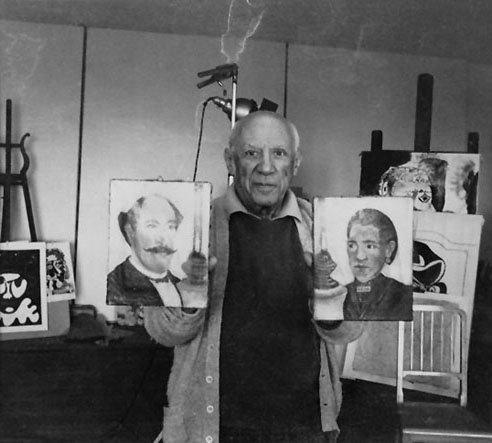
The Dinner That Made Henri Rousseau Famous, By Jessica B. Harris (The New York Times Magazine, October 29, 2017) Photograph: Web Art Academy.
In 1908, Pablo Picasso and his close friend Guillaume Apollinaire, a poet and an art critic, decided to host a lavish dinner party for Henri Rousseau, who was, at the time, a widely denigrated painter. Picasso had recently purchased a Rousseau painting from a secondhand shop in Montmartre, where the owner suggested that the portrait of a large woman was so bad it should be painted over. But Picasso, who bought it for 5 francs, liked it in a twisted way: It was so bad that it was good. As a joke, he and Apollinaire planned an over-the-top dinner to celebrate the douanier, or customs officer, a nickname for Rousseau, who had spent much of his life as a public servant. The two sent invitations to a constellation of notable people - Alfred Jarry, Georges Braque, Juan Gris, Max Jacob, Marie Laurencin, Gertrude and Leo Stein, Alice B. Toklas - summoning them to Picasso’s studio apartment in the Bateau Lavoir, a decrepit green building that housed artists.
Before he received acclaim for his post-Impressionist jungle scenes, Rousseau, then 64, was known as a shy bureaucrat who had retired from his job as a toll taker to devote himself to painting full time. A familiar figure in the cafes and artists’ haunts of the Butte Montmartre, he had paintings exhibited at the Salon des Independents, an annual show put on by a famous painters’ association, but his work was never prominently displayed. His naive artistic style was more a source of ridicule than adulation from critics; some of his paintings had been slashed with penknives. He supplemented his pension by playing violin on the street.
There are multiple versions of what happened that night, and the story’s embellishments have only grown in the years since. Some say that Picasso gave the caterer the wrong day, so Fernande Olivier, Picasso’s mistress and model, improvised a riz a la Valenciennes, a rice dish made with chicken and seafood. Others suggest that the meal was just an excuse for Olivier to try a paella recipe that she picked up during a recent trip to Spain. Gertrude Stein was rumored to have wandered the local shops looking for last-minute cheeses and sardines. All agreed that the meal was delicious. The guest of honor arrived that night with his violin in one hand and his cane in the other and was soon feted with songs and a poetic toast loudly declaiming by Apollinaire, with Braque accompanying the speech on his accordion: “These wines that in your honor Picasso pours,/Let’s drink them then, since its the hour for drinking,/Crying in unison: ‘Long live! Long live Rousseau!” Rousseau even obliged the crowd with some melodies.
By midnight, the party had grown rowdier. As the original seated dinner ended, people in cafes and bars of the Butte heard rumors of the party and decided to join. Frederic, the owner of the Lapin Agile, a nearby cafe, appeared with his flatulent pet donkey. Laurencin did a risque dance for the crowd and fell, blind drunk, onto the pastries that were supposed to be for dessert. There may have been a brawl between the poets Andre Salmon and Maurice Cremnitz, though they later claimed to have faked it. At one point, Rousseau, delighted with the adulation, is said to have gravely announced to Picasso: “You and I are the greatest painters: I in the modern genre, you in the Egyptian.” He left with the Steins in the wee hours of the morning. The remaining guests slept on the floor.
Despite beginning as a joke, the dinner is often credited with legitimizing Rousseau in the art world. Picasso kept “Portrait of a Woman,” even after Rousseau’s death in 1910, once calling it “one of the most truthful of all the French psychological portraits.” The painting is now in his collection in the Musee Picasso in Paris.
1 note
·
View note
Text

André BRETON
"Hymne" : poème autographe de jeunesse « Alcée en pleurs dédaigne une rose glacée »
circa 1917-1918, 22,3x27,6, une feuille sous chemise et étui.
Remarquable poème de jeunesse autographe d'André Breton, intitulé "Hymne", vers à l'encre noire sur papier vergé, daté par l'auteur en d'août 1914. Notre manuscrit fut rédigé entre mars 1917 et le début de l'année 1918.
Notre poème est présenté sous chemise et étui aux plats de papier à motifs abstraits, dos de la chemise de maroquin vert olive, gardes et contreplats de daim crème, feuille de plexiglas souple protégeant le poème, étui bordé de maroquin vert olive, étiquette de papier olive portant la mention "poème autographe" appliquée en pied du premier plat de l'étui, ensemble signé de Thomas Boichot.
Probablement la pièce la plus mallarméenne jamais écrite par Breton, "Hymne" est composé durant le premier mois de la guerre, alors que le jeune poète et ses parents se hâtent de rejoindre Paris. Le poème fut par la suite publié dans Solstices n°2 en juillet 1917. Il est l'un des deux seuls à porter une date dans le recueil et dans sa version manuscrite, sans doute pour souligner le contexte difficile de sa rédaction : « par un sale temps, l'auteur rimant ce poème pour être certain de ne pas du tout prendre part à la conversation de ses parents […] sur quelque ignoble route de Lorient où ceux-ci s'étaient à temps retirés » (note de Breton, 1930). On reconnaît sans peine l'influence des symbolistes dans la précision de l'alexandrin rimé et le goût pour les allusions mythologiques. Le jeune Breton consacre son hymne aux amants de Lesbos, le couple légendaire de poètes grecs Sappho et Alcée. Breton glisse dans la première strophe un souvenir de L'après midi d'un faune parmi les allusions voluptueuses (« Un bras faible se noue en des mythologies / Scabreuses dont la flûte émeut l'enchanteresse / Au torse vain du faune avide […] »). Erotisme et fascination morbide se mêlent lorsqu'il évoque le sort tragique de Sappho, qui, selon Ménandre, s'élança du haut des rochers de Leucade. Le poème s'achève sur une invocation d'Alcée à Sappho, déjà emportée par les eaux :
« Tu vois qu'un cerne aimable diminue
Aux paupières. La peur que fraîchissent les touffes
Désertes, l'une ou l'autre, en vain, si tu l'étouffes,
Promit ta chevelure aux fleurs d'écaille, bleue...
Trêve d'héliotrope où s'irise une queue
De sirène, le flot te cajole. »
Digne héritier de la poésie de Mallarmé, ce rarissime manuscrit date de la jeunesse symboliste d'André Breton, au lendemain de la déclaration de guerre.
***
Poème essentiel de la période pré-dadaïste de l'auteur, il fait partie d'un ensemble cohérent de sept poèmes manuscrits de Breton (désigné sous le nom de coll.X. dans les Œuvres complètes d'André Breton, tome I de La Bibliothèque de la Pléiade, Gallimard, 1988, p. 1071). Ces poèmes, de sa graphie de jeunesse, sont soigneusement calligraphiés à l'encre noire sur papier vergé filigrané. Cet ensemble a été adressé à son cercle d'amis et d'écrivains, où figurent notamment Valéry, Apollinaire, Théodore Fraenkel, et son frère d'armes André Paris. Il fut par la suite publié dans son premier recueil, Mont de piété, qui parut en juin 1919 à la maison d'édition Au sans Pareil, nouvellement fondée par son ami René Hilsum.
La datation précise de cet ensemble de poèmes autographes est déterminée par l'écriture du dernier poème de la collection (« André Derain »), composé le 24 mars 1917, qui offre un terminus post quem absolu. En outre, une version plus ancienne du poème « Age », dédié à Léon-Paul Fargue, figure dans notre collection sous son nom originel « Poème ». Daté par l'auteur du 19 février 1916 – le jour de ses vingt ans – et créé 10 jours plus tôt selon sa correspondance, il ne fut rebaptisé et remanié que pour sa publication en juillet 1918 dans Les Trois Roses. Selon toute vraisemblance antérieur à la parution de ce dernier poème, les sept poèmes autographes, furent probablement rédigés courant 1917 ou au début de l'année 1918, alors que Breton poursuit son internat au Val-de-Grâce et fait la rencontre décisive de Louis Aragon.
Les poèmes qui constitueront Mont de piété représentent un rare et précieux témoignage de ses influences de jeunesse, à l'aube de son adhésion au mouvement Dada et sa découverte de l'écriture automatique. Assez brefs et parfois sibyllins, on y sent poindre des accents symbolistes empruntés à Mallarmé, qu'il redécouvre lors de matinées poétiques au théâtre Antoine, au Vieux-Colombier, en compagnie de son camarade de lycée Théodore Fraenkel. Durant le premier mois de la guerre, Breton se consacre également à Rimbaud, et se plonge dans Les Illuminations, seul ouvrage emporté dans la confusion et la hâte qui suivit la déclaration de guerre. De ses lectures rimbaldiennes naquirent les poèmes « Décembre », « Age », et « André Derain », tandis qu'il emprunte à Apollinaire sa muse Marie Laurencin à qui il dédie « L'an suave ». Par ailleurs, l'héritage poétique de l'auteur sera particulièrement marqué par la figure de Paul Valéry, avec qui il entre en correspondance dès 1914. Valéry joue dans l'écriture des poèmes de Mont de Piété un rôle considérable par l'attention et les conseils qu'il prodigue au jeune poète. Admiratif de l'audace de son disciple, qui lui adressa chacun de ses poèmes, il apprécie le poème « Facon » (1916) en ces termes : « Thème, langage, visée, métrique, tout est neuf, mode future, façon » (Lettre de juin 1916, Œuvres complètes d'André Breton, tome I de La Bibliothèque de la Pléiade, Gallimard, 1988, p. 1072).
Ces fleurons incontournables de la jeunesse de Breton furent composés entre sa dix-septième et vingt-troisième année. Surpris à Lorient par la déclaration de guerre, il devient infirmier militaire, puis officie dans plusieurs hôpitaux et sur le front pendant l'offensive de la Meuse. Il fait à Nantes la connaissance de Jacques Vaché, qui lui inspire un projet d'écriture collective, ainsi que l'illustration du futur recueil Mont de Piété, finalement réalisée par André Derain. La fréquentation de ce « dandy révolté contre l'art et la guerre », qui partage son admiration pour Jarry, et le contact des aliénés du centre neuro-psychiatrique de Saint-Dizier marquent une étape décisive dans la genèse du surréalisme. Affecté au Val-de-Grâce à partir de 1917, Breton trouve à Paris l'effervescence littéraire nécessaire à sa quête poétique et récite Rimbaud en compagnie d'Aragon. C'est par l'entremise d'Apollinaire qu'il se lie d'amitié avec Soupault, futur co-auteur des Champs magnétiques, et Reverdy, fondateur de la revue Nord-Sud, qui publiera des poèmes de Mont de piété. Les sept poèmes de la collection seront par la suite publiés dans des revues littéraires d'avant-garde (Les Trois Roses, Solstices, Nord-Sud) entre 1917 et le début de l'année 1919.
Quatre des sept poèmes urent dédiés aux maîtres et amis de l'auteur : Léon-Paul Fargue, et surtout Apollinaire, à qui Breton avait consacré une étude dans l'Eventail. L'auteur rend également hommage à Marie Laurencin et André Derain, créateurs "d'oeuvres plastiques encore toutes neuves, en butte à un décri et une intolérance presque unanimes", chères à Breton tout au long de sa vie (XXe siècle, n°3, juin 1952). Il multiplie avec ces dédicaces les allusions croisées, dédiant à l'un un poème inspiré par l'autre, à l'exemple de « Décembre », dédié à Apollinaire, qui fait écho à Rimbaud et son poème « Aube » (Les Illuminations, 1895).
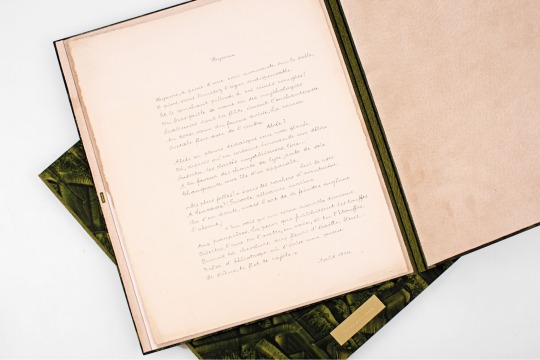
https://www.edition-originale.com/fr/litterature/poesie/breton-hymne-poeme-autographe-de-jeunesse-1917-64270?id_recherche=5d58169f312a0
0 notes
Photo

Henri Rousseau (1844-1910, French) ~ Apollinaire and his Muse -Marie Laurencin-, 1909
18 notes
·
View notes